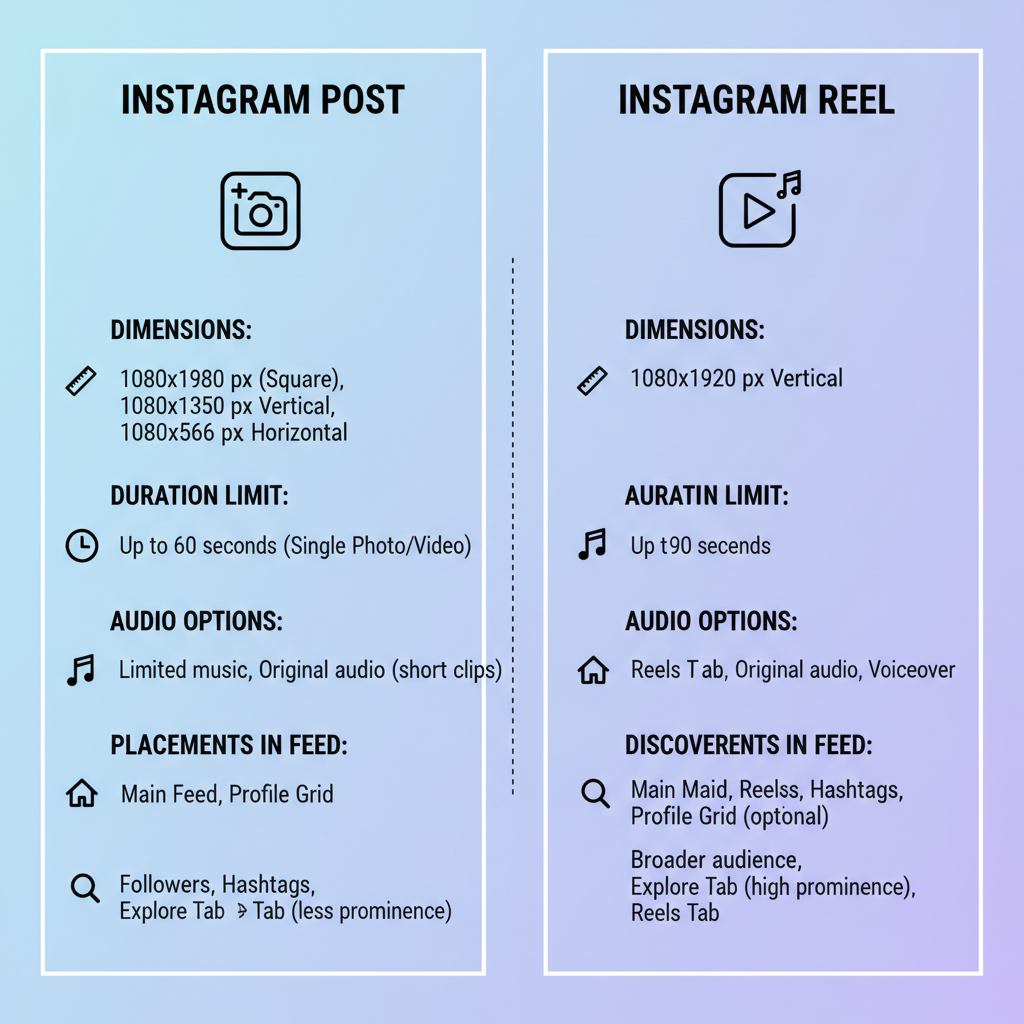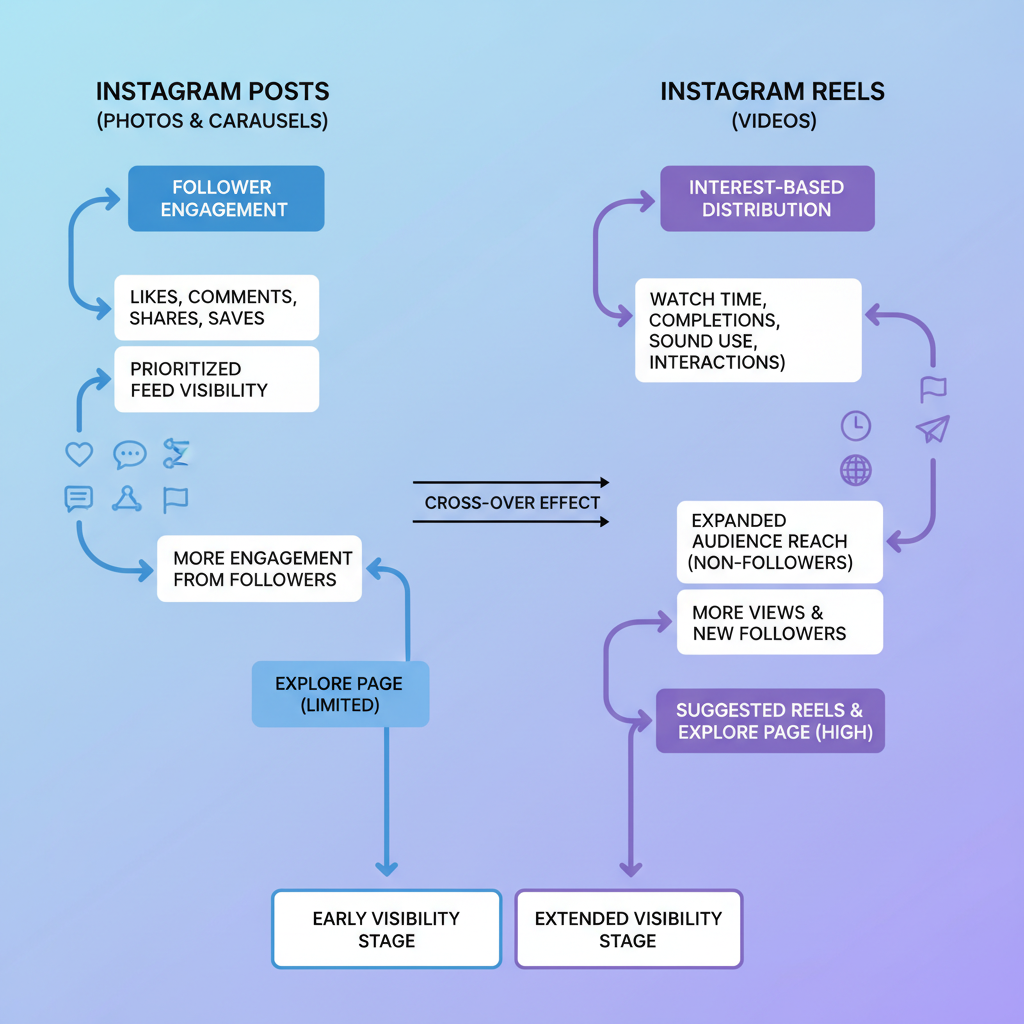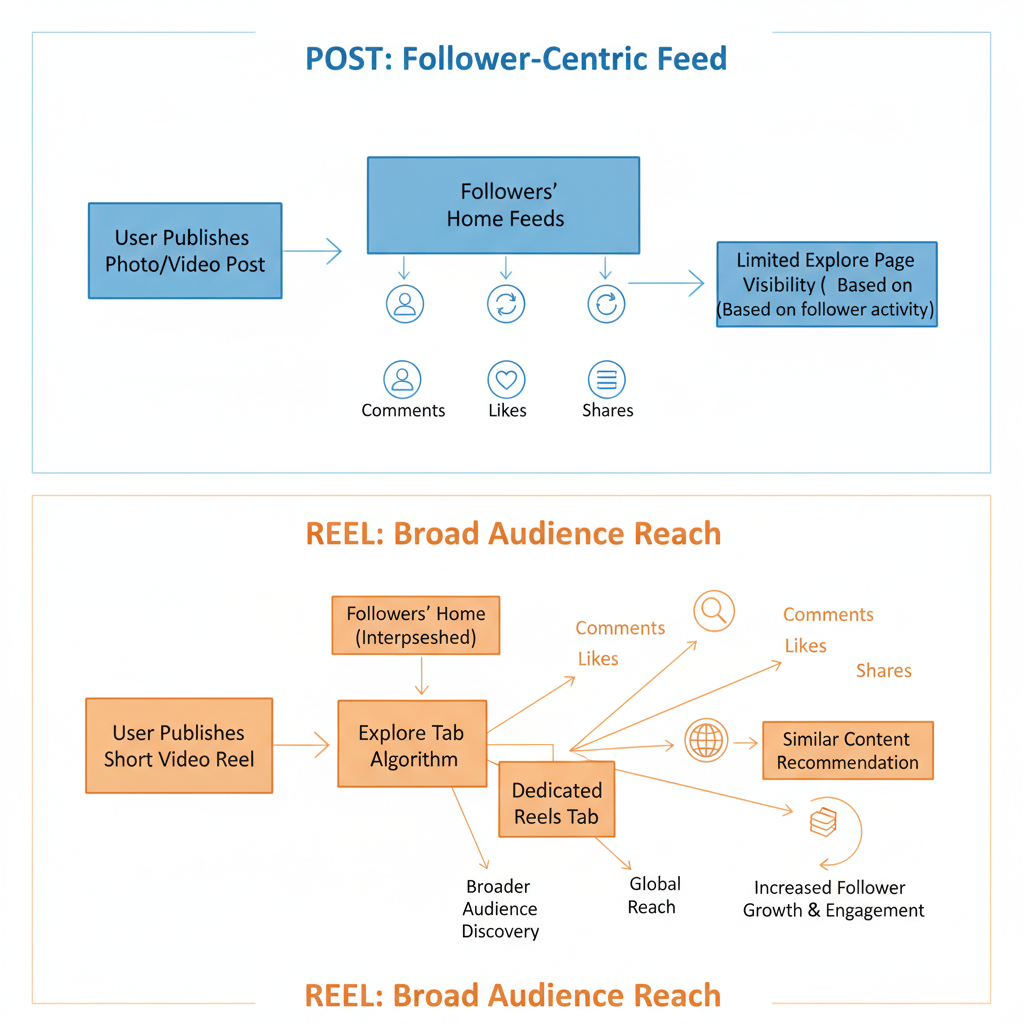Difference Between a Reel and a Post on Instagram Explained
Learn the key differences between Instagram Reels and Posts, from format and algorithm reach to engagement patterns, to boost your content strategy.

Introduction to Instagram Content Types
Instagram has evolved far beyond a basic photo-sharing app. Today, it’s a robust platform offering multiple content formats to connect with audiences, share stories, and inspire. Two of the most impactful formats are Reels and Posts. Whether you are a brand, a creator, or a casual user, understanding the difference between a reel and a post is essential to maximize reach, engagement, and overall growth.

In this comprehensive guide, you’ll learn what each format is, their technical specifics, algorithmic differences, and how to create a winning content strategy using both.
---
What Is an Instagram Post?
An Instagram post is the traditional content format that appears on your profile grid. Originally designed for static images, the post format now includes:
- Photo posts – Single images with captions.
- Carousel posts – Multiple photos or videos in a swipeable format.
- Video posts – Longer-form videos (up to 60 minutes).
Posts remain on your profile unless deleted or archived, making them an evergreen part of your Instagram presence.
Placement in Feed
- Displayed in your profile grid.
- Appears in followers’ feeds based on chronological or algorithmic sorting.
- Can be shared via direct messages or reshared to Stories.
---
What Is an Instagram Reel?
An Instagram Reel is a short-form vertical video format, typically 15–90 seconds, designed for quick, engaging, and often trend-based storytelling.
- Key Feature: Optimized for discovery and explore-page placement.
- Interactive Elements: Advanced in-app editing, trending audio, AR effects.
- Viewing Placement: Dedicated Reels tab, Explore page, and optionally in the main feed.
Core Purpose of Reels
Reels aim to entertain and engage through music, trends, and storytelling. They offer higher visibility potential outside your immediate follower base, similar to TikTok’s content experience.

---
Key Technical Differences
Though both formats support images and video, technical specs vary significantly:
| Aspect | Instagram Post | Instagram Reel |
|---|---|---|
| Duration | Up to 60 minutes (video) | 15–90 seconds |
| Aspect Ratio | 1:1 (square), 4:5 (portrait) | 9:16 (full-screen vertical) |
| Editing Tools | Basic crop and filters | Advanced effects, transitions, and audio sync |
| Music Options | Limited by licensing | Extensive trending audio library |
| Captions | Static text in description | On-screen text plus description |
---
Reach and Discoverability
How the Algorithm Works
One of the biggest distinctions in the difference between a reel and a post is in how the algorithm surfaces them:
- Posts: Primarily shown to current followers, with modest reach to non-followers via hashtag search or the Explore page.
- Reels: Pushed aggressively to new audiences through the Reels tab, Explore page, and suggested videos.
Hashtag Strategies
- Posts: Use niche, specific hashtags for targeted reach.
- Reels: Pair trending hashtags with popular audio for maximum algorithmic boost.
---
Engagement Differences
Engagement patterns differ because of viewing contexts:
- Reels:
- More views and shares.
- Higher comment rates from trend participation.
- Frequent saves for quick tips or tutorials.
- Posts:
- Steady accrual of likes over time.
- Comments mainly from loyal followers.
- Saves for evergreen or informational content.
---
Strategic Impact on Content Planning
Integrating both formats strategically enhances your growth potential.
- Reels: For rapid audience expansion, virality, and topical engagement.
- Posts: For consistent branding, curated visuals, and lasting profile value.
When to Choose Each
- Choose Reels for:
- New product launches.
- Trend adaptation.
- Audience growth campaigns.
- Choose Posts for:
- Permanent announcements.
- Detailed educational content.
- Maintaining brand aesthetic.
---
Pros and Cons of Reels
Pros
- High potential for virality.
- Favored by Instagram’s algorithm.
- Creative freedom with in-app tools.
Cons
- More time-consuming to create.
- Trends change quickly.
- Shorter relevance cycle for trend-based content.

---
Pros and Cons of Posts
Pros
- Evergreen content longevity.
- Ideal for strong visual branding.
- Easier, less resource-intensive production.
Cons
- Less organic discovery beyond existing followers.
- Lower algorithmic reach without strong engagement.
- Fewer interactive features.
---
Tips for Using Both Formats Together
To maximize Instagram growth, integrate both formats seamlessly:
- Balance Output – Aim for 2–3 Reels and 2–3 Posts weekly.
- Cross-Promote – Share Reels to Stories for more views.
- Batch Production – Film multiple Reels in one session to save time.
- Monitor Insights – Track performance and iterate based on metrics.
- Repurpose Content – Convert Reels into carousels for expanded detail and posts into Reels for quick highlights.
---
Conclusion: Mastering Instagram with Reels and Posts
Ultimately, the difference between a reel and a post comes down to purpose, reach, and longevity.
Use Reels for:
- Quick audience growth.
- Trend leverage.
- High-impact short storytelling.
Use Posts for:
- Evergreen impact.
- Brand narrative.
- Detailed visuals or informative content.
The most effective Instagram strategies in 2024 blend both—using Reels to draw in fresh audiences and Posts to keep them engaged long-term. Start experimenting today, track the results, and let the synergy of these two formats drive your social media success.


